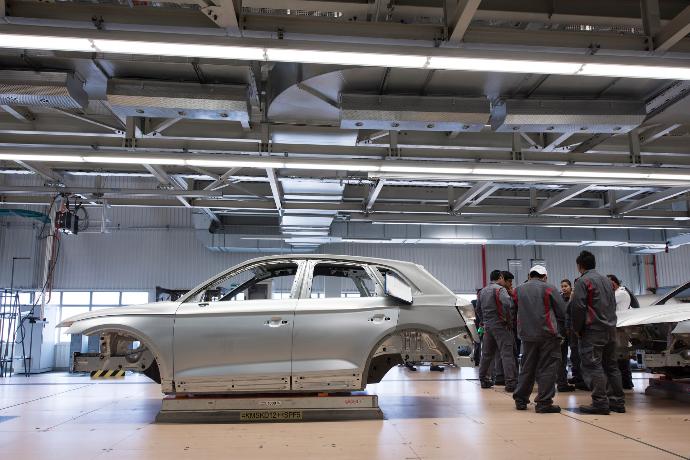Mobility
From Hardware to Software
Mobility in the Automotive industry
Automotive new innovations will be powered by “post-digital” technologies
Digital technologies of the past decade allowed automakers and suppliers to double down on innovation and kick their transition from the vehicle and parts manufacturers to technology companies into high gear.
But digital capabilities and the advantages they afford are now widely available. They are expected. No longer differentiating.
70%
of automotive executives believe the combination of "post-digital" technologies will transform their organizations extensively over the next three years:

Distributed Ledger
Share data on vehicles and their owners, manufacturers, and dealers in a secure way. Monetize data and derive value by increasing utilization and selling unused space through car sharing. Link data held by different businesses including manufacturers, dealers, auto finance providers, and insurers. Enable consumers to save money through ‘pay as you go’ access to mobility and cheaper insurance based on usage and accurate data.

Artificial Intelligence
Autonomous cars and self-driving vehicles. Navigating complex traffic situations. Self-driving delivery services. Collaborative robots for industrial automation. Predicting machine failure with machine learning. Altering bad driving habits. Keeping commercial fleets safe. AI-powered advanced driver-assistance system (ADAS).

Quantum Computing
Game-changing for everything from mobility-as-a-service to artificial intelligence to optimizing the design of car components. Real-time determination of the most efficient route. Designing an engine block to minimize weight. Make batteries for electric vehicles more powerful. Eliminating traffic lights and traffic jams. Reduce harmful polluting vehicles. Find the shortest route between multiple destinations.

Extended Reality
AR and VR as part of R&D and design processes. Prototype testing by the end-customer, VR remote development, VR-powered self-driving car tests. AR training. Smart glasses assistance in SCM and production. AR-embedded quality control. Augmented control of production line. AR-powered vision picking in logistics. Virtual remote control of production. Augmented and virtual car configurators. Virtual test-driving. Virtual showrooms. Virtual technical handbooks. Augmented damage analysis.
External shock:
One of the first pandemics of its kind that is forcing the automotive industry to re-think its business
To rebound from the coronavirus pandemic, the automotive industry must undertake a journey that begins with resolve and ends with fundamental reform.
Four major challenges amid the COVID-19 crisis

1. Limited Supply of Vehicle Parts
Starting in China, suppliers around the globe placed production lines in quarantine or shut them down completely. Also, legal and trade restrictions, such as closed borders, increased the shortage of required parts and limited distribution of supplies.

2. Shut down of Manufacturing
A limited parts supply and a just-in-time production strategy, coupled with quarantine measures and a reduced workforce, lead OEMs to shut down their production. This is enhanced by the need to secure liquidity and reduce overproduction due to the decrease in sales.

3. Declining Working Capital/ Liquidity
A decline in cash inflow resulted from the drop in demand while short-term liabilities and salaries still need to be paid. Cash reserves are likely to be exhausted within a few months.

4. Drop-in New Vehicle Sales
Politically enforced measures to contain the virus, such as implementing curfews, closing factories, offices, dealerships and the resulting dismissals of short-time workers, as well as the fear of a recession, are likely to lead to a decrease in sales numbers.
Automotive Response and Key Imperatives
How to address current disruptions and prepare for the ‘new normal’
REFORM
Consider strategies for addressing the persistent issues affecting the sector to avoid the next crisis.
RESILIENCE
Move quickly to address near-term cash management challenges and broader resiliency issues.
RETURN
Revive the supply chain, match volume to actual demand, and, most importantly, protect the workforce.
RESOLVE
Determining the scale, pace, and depth of action required.
REIMAGINATION
Fundamentally shift how people live, work, and use technology.